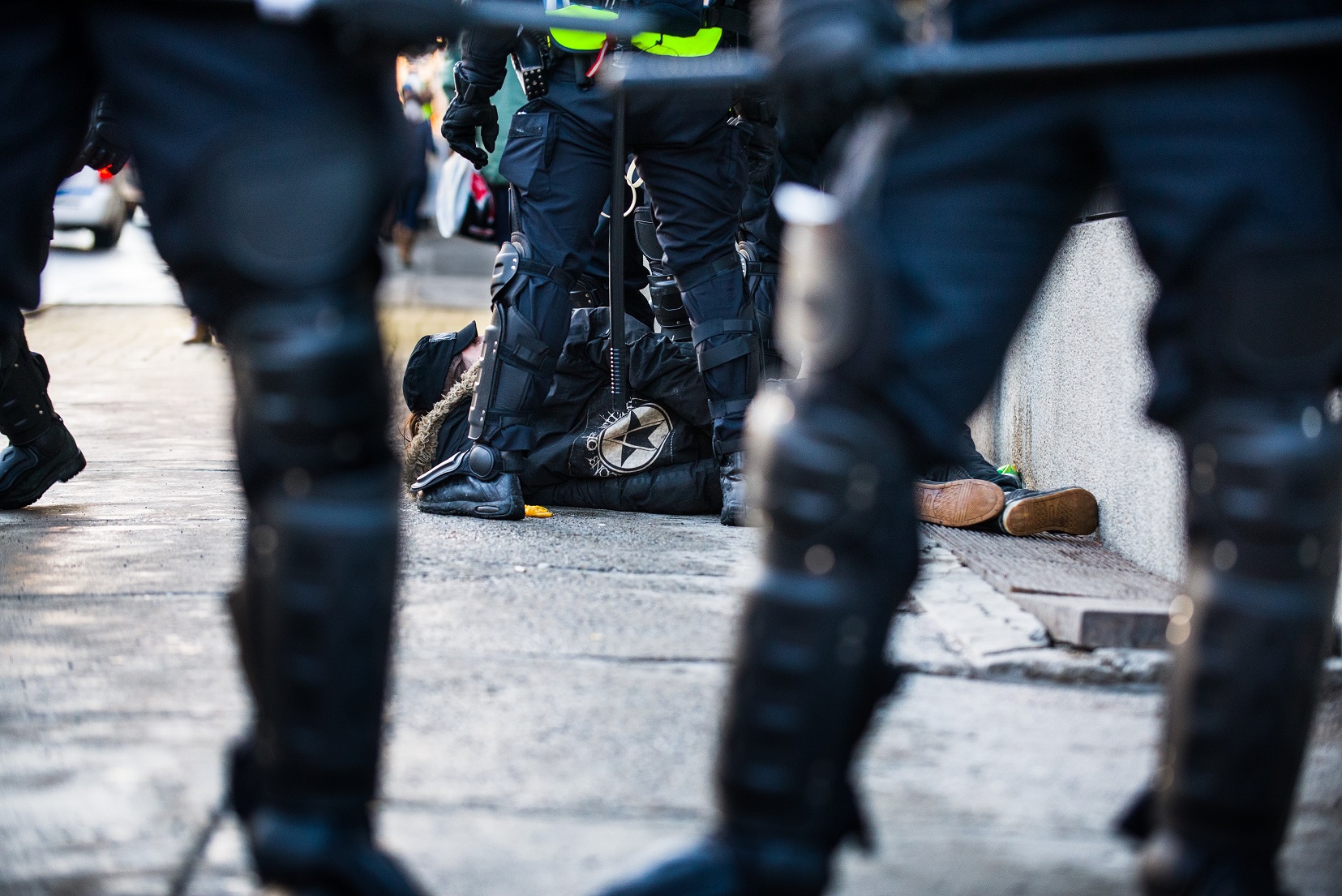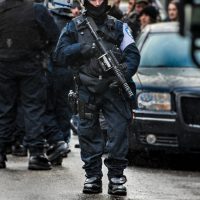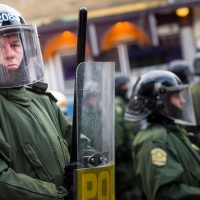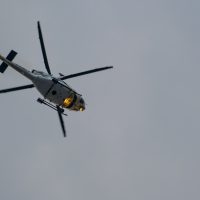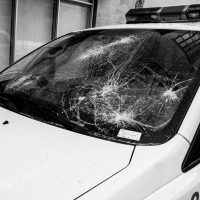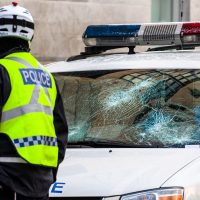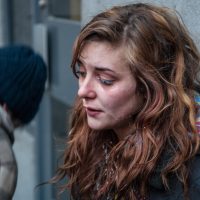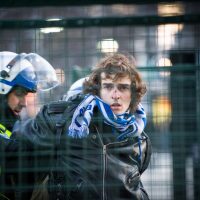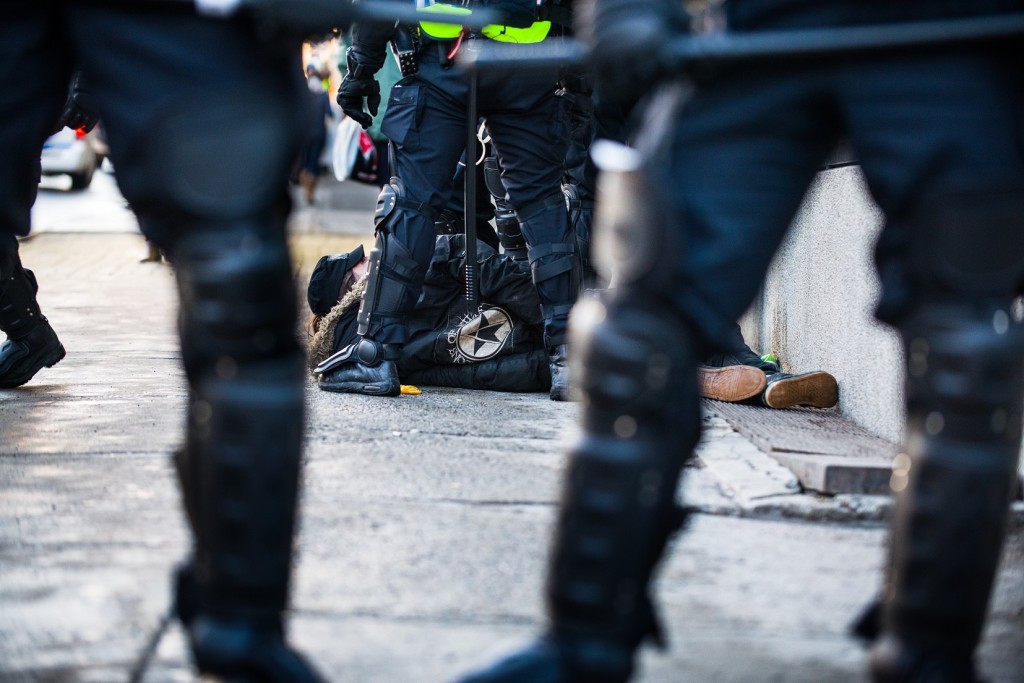
Montreal’s 17th annual anti-police brutality march was a disjointed and hectic affair that led to the arrest of more than 250 people.
Service de police de la Ville de Montréal officers descended on the Friday evening protest early, separating groups of demonstrators and making arrests moments before the event began.
Officers clashed with small groups of protesters on Ste-Catherine St. near Place-des-Arts several times between 5 and 7 p.m.. The busy area was crowded with police, demonstrators and bystanders as officers used tear gas and concussion grenades to disperse crowds and form perimeters.
The protest informally ended when more than 200 people were placed under mass arrest on Ste-Catherine St. near Sanguinet St. where two large groups were surrounded by police, handcuffed and taken away in city buses. Kettling, a police tactic often used during last spring’s demonstrations against tuition fee increases and Bill 78, sees protesters contained within a limited area and provides only a single option of exiting. Journalists from several media outlets, including The Concordian and The Link, were also detained but released shortly after.
According to the SPVM, the majority of those arrested were in violation of municipal bylaw P-6. The controversial law, which was passed in the midst of last year’s student protests, forbids the covering of one’s face during a demonstration and demands that authorities be provided with a protest itinerary lest participation be declared illegal.
Those detained were given tickets and released before midnight.
The historically violent march began on a tense note with several hundred people gathered at the corners of Ontario St. and St. Urbain St. amidst a heavy police presence. Cavalry and riot squads attempted to block off the roads leading out of the square while other units moved through the crowd, searching protestors and making preventive arrests.
“You can see from the police here that the SPVM are becoming more efficient as a paramilitary force, and the problem is that this is exactly what people are protesting against,” said demonstrator Marc-Antoine Bergeron. “Evidently, the police don’t want this protest to even take place.”
The march was declared illegal minutes after 5 p.m. on the basis that a planned itinerary was not provided to police, and demonstrators were ordered to disperse.
At that point the march began to make its way south on St. Urbain St., but did not reach the end of the block. Police charged the group, breaking it into smaller factions that were then forced to flee a Sûreté du Quebec riot squad that materialized out of an underground parking garage.
The tactic disorganized the demonstrators, and they did not manage to re-form as a large collective. Smaller, splintered groups were confronted by police for the rest of the evening.
Twenty-two of the arrested face criminal charges that include obstruction of justice, disturbing the peace, outstanding arrest warrants and possession of incendiary objects. Two police officers were injured during the evening’s events.
The anti-brutality march has traditionally been notorious for violence. More than 200 people were arrested at last year’s event, at which a police cruiser was overturned and windows of businesses along the march’s route were smashed.
Police prepared for the worst Friday morning, going so far as to hand out flyers downtown warning the public to avoid the protest. By the march’s end, a few patrol cars that had been damaged with bricks were the only acts of vandalism reported.
